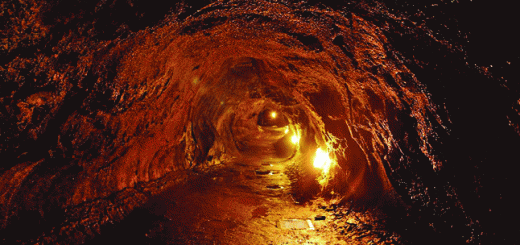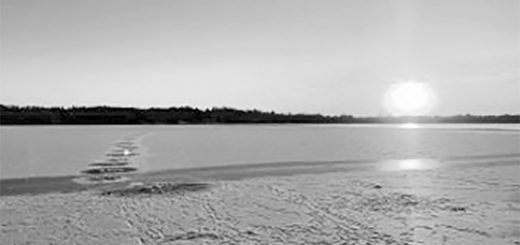How scientists traced a uranium cube to Nazi Germany’s nuclear reactor program
 The mysterious cube arrived in the summer of 2013. Physicist Timothy Koeth had agreed to go to a parking lot for an unspecified delivery. Inside a blue cloth sack, swathed in paper towels, he found a small chunk of uranium.
The mysterious cube arrived in the summer of 2013. Physicist Timothy Koeth had agreed to go to a parking lot for an unspecified delivery. Inside a blue cloth sack, swathed in paper towels, he found a small chunk of uranium.
It was about 5 centimeters across, with “a white piece of paper wrapped around it, like a ransom note on a stone,” Koeth says. On the paper was a message: “Taken from the reactor that Hitler tried to build. Gift of Ninninger.”
Koeth, a collector of nuclear memorabilia, was enthralled. “I just immediately knew what this thing was,” he says. During World War II, German scientists had attempted to build a nuclear reactor, until their uranium cubes — more than 600 of them — were confiscated by Allied forces and shipped to the United States.
Koeth, of the University of Maryland in College Park, thought his cube could be from that cache but wanted to confirm the hunch. In the process, he and University of Maryland graduate student Miriam Hiebert came to a striking conclusion, reported May 1 in Physics Today: Contrary to conventional wisdom, Germans scientists could have created a nuclear reactor during the war, but competition between teams stymied the effort.
The first clue to the cube’s heritage was its surface. Pockmarked with bubbles, it pointed to primitive uranium processing techniques used at the time. Another hint came from the name “Ninninger” in the note. Some digging revealed that it was the misspelled last name of Robert Nininger, who had been involved with the U.S. wartime effort to build an atomic bomb, known as the Manhattan Project. Nininger’s widow confirmed that he once had owned a uranium cube and gave it to a friend. Koeth thinks that the cube changed hands several more times before it eventually came to him. (Its radioactivity levels are low enough that the cube is safe to handle.)
In a nuclear reactor, atoms split through a process known as fission. Get enough uranium in one place, and the neutrons released in fission can trigger additional fissions, kicking off a continuing chain of reactions that releases energy. Uranium for use in modern nuclear reactors is enriched to contain more of a particular isotope, or variety of the element with a given number of neutrons. That isotope is the one that is important for nuclear fission. But the German reactor attempt used uranium with its naturally existing abundance of isotopes.
So Koeth and Hiebert measured the energy of gamma rays — high energy particles of light — emitted from the cube as the atoms within decay. Those measurements confirmed that the cube was natural, unenriched uranium.
Further tests indicated that the cube was never in a working reactor. If it had been, the researchers would have detected gamma rays from the isotope cesium-137. A similar hunk of material taken from the first successful nuclear reactor at the University of Chicago in 1942 did contain the telltale cesium.
The researchers’ sleuthing also resulted in an unexpected historical find. Modern computer simulations have suggested that the Germans’ 664-cube uranium stash hadn’t been enough for the scientists to create a nuclear reactor. A minimum amount of the element, called a critical mass, is necessary to sustain the chain of reactions that occur in a reactor. To reach that mass, the Germans, working under physicist Werner Heisenberg, would have needed a few hundred additional cubes.
 But as Koeth and Hiebert scoured documents at the National Archives in College Park, the pair found references to another 400 or so cubes held by a different German research group. At the time, German science teams were competing against one another. Had they combined forces, they would have had enough uranium to make a reactor, Koeth and Hiebert determined. The German scientists were still far from producing an atomic bomb, however.
But as Koeth and Hiebert scoured documents at the National Archives in College Park, the pair found references to another 400 or so cubes held by a different German research group. At the time, German science teams were competing against one another. Had they combined forces, they would have had enough uranium to make a reactor, Koeth and Hiebert determined. The German scientists were still far from producing an atomic bomb, however.
Koeth eventually plans to loan his cube to a museum. For now, it’s ensconced in a custom-built, handheld display case, and is the jewel of Koeth’s collection of nuclear artifacts. Those other items include graphite from that first reactor at the University of Chicago, greenish glass from sand fused by an atomic bomb test and uranium-infused glassware known as Vaseline glass that glows green under ultraviolet light.
“I’m humbled” by the cube, Koeth says. Uranium fuels nuclear power, which could help free humanity from fossil fuel dependence, he says. But the element can also be used in devastating weapons. Nuclear physics “has the ability to save us and to totally destroy us. And that little cube represents all of that.”
The pair still want to chase down the remaining cubes from Heisenberg’s reactor attempt. They know the whereabouts of 10 others, including one at the Smithsonian Institution based in Washington, D.C., and another at Harvard University. Others are probably scattered around the United States. “They could be in people’s basements all over the country,” Hiebert says. Perhaps to some, it’s just “ ‘that weird cube that my dad had in his office,’ ” she says.











Recent Comments